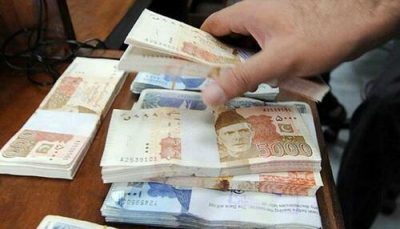Pakistan on the Verge of Inflationary Collapse – Pleads for Larger IMF Bailout

All Global Research articles can be read in 51 languages by activating the “Translate Website” drop down menu on the top banner of our home page (Desktop version).
To receive Global Research’s Daily Newsletter (selected articles), click here.
Visit and follow us on Instagram, Twitter and Facebook. Feel free to repost and share widely Global Research articles.
***
Pakistan, a nuclear power with at least 165 warheads from short range to medium range, is facing potential economic collapse according to the country’s Finance Minister, Miftah Ismail.
With an official inflation rate of over 13.37% (double the official CPI to get a more accurate picture of true price inflation), the 2nd fastest rising rate in Asia, Pakistan has sought relief from foreign debt obligations and an IMF bailout deal. Initial arrangements for a three year deal with the IMF began in 2019, but Pakistan says that deal, originally for $6 billion USD, is ‘outdated’ due to the covid pandemic and new global financial pressures. The nation now says it is in ‘dire need’ of at least $36 billion in order to stay afloat.
Pakistan is slated to pay back over $21 billion USD in foreign debt within the next fiscal year. It is also struggling with extensive food inflation and supply chain disruptions as the government seeks to import at least 3 million tons of wheat and 4 million tons of cooking oil to alleviate shortages.
This is yet another example of the spread of global inflation/stagflation that is going largely ignored by western media outlets. Nations like Pakistan with already weakened economic conditions are canaries in the coal mine; leading indicators of what is likely to happen throughout more affluent first world nations should current conditions continue.
With globalist institutions like the UN, the IMF, the BIS, World Bank and the WEF all predicting major food shortages this year, the mainstream media has been noticeably quiet when it comes to nations where the crisis is already bubbling to the surface.
The reason the instability in Pakistan is particularly concerning is because it is one of nine countries in the world (officially) with a nuclear arsenal, not to mention an ongoing border conflict with India which sparked two wars in 1947 and 1965, as well as a limited war in 1999. As economic instability rises so does public discontent and rebellion. By extension, political elites commonly offer war as a “release valve” for public anger and a distraction from financial pain. Otherwise, the potential for widespread civil unrest grows daily.
To be sure, Pakistan is not the only country facing these conditions today, it is one of many. However, unlike many African or South American nations where the effects of inflationary collapse remain mitigated to domestic concerns, a collapse in Pakistan could have international implications.
Beyond the threats associated with sinking economies and regional conflicts, the IMF has become the go-to loan shark, circling struggling nations when it smells blood in the water. As more and more countries face declines associated with inflation/stagflation, it is not conspiratorial to suggest that the IMF greatly benefits. As the world breaks down, more nations become beholden to the IMF debt structure until eventually they are owned lock, stock and barrel by a handful of banking elites.
*
Note to readers: Please click the share buttons above or below. Follow us on Instagram, Twitter and Facebook. Feel free to repost and share widely Global Research articles.
Featured image is from ZH

